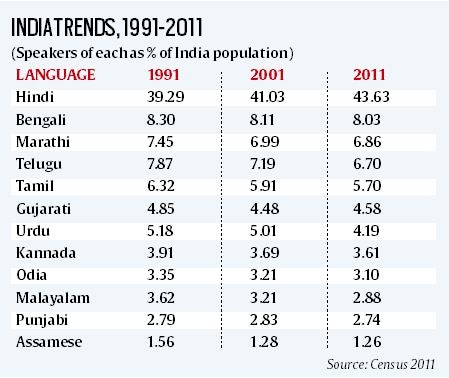Note4Students
From UPSC perspective, the following things are important :
Prelims level: Read the attached story
Mains level: NA

Friday, February 21 was International Mother Language Day.
International Mother Language Day
- It has been observed since 1999 to promote “linguistic and cultural diversity and multilingualism”, according to the UN.
- Of the world’s 6,000 languages, 43% are estimated as endangered, according to the UN.
- On the other hand, just 10 languages account for as many as 4.8 billion speakers — over 60% of the world population.
- Globally, English remains the most widely spoken language with 1.13 billion speakers in 2019, followed by Mandarin with 1.17 billion, according to the online database Ethnologue.
Why February 21?
- UNESCO declared International Mother Language Day in 1999, to commemorate a 1952 protest against West Pakistan’s imposition of Urdu as the official language of East Pakistan (present-day Bangladesh).
- According to a report, police opened fire on demonstrating Dhaka University students and “some people were killed”.
- When thousands thronged the university the next day, police fired again, killing more people.
- In Bangladesh, since 1953, February 21 is observed as Ekushe Day, after the Bengali word for twenty-one.
- According to the South Asia Democratic Forum, five among those killed were recognised as “language martyrs — Abul Barkat, Abdul Jabbar, Rafiquddin Ahmad, Abdus Salman and Shafiur Rahman.
Data on Indian languages

- Hindi is third with 615 million speakers while Bengali is seventh with 265 million.
- In India, Hindi is the most spoken language with over 528 million speakers in 2011, as per the Census.
- Bengali had 97.2 million speakers in 2011, followed by Marathi (83 million), while other languages with over 50 million speakers are Telugu (81 million), Tamil (69 million), Gujarati (55.5 million) and Urdu (50.8 million).
- Percentage trends from 1991 to 2011 underline the growth of the most widely spoken language, Hindi, which was spoken by 39.29% of the Indian population in 1991, and whose share grew to 43.63% in 2011.
- For other languages in India’s top 12, the 2011 percentage share has fallen when compared to that in 1991.
Get an IAS/IPS ranker as your 1: 1 personal mentor for UPSC 2024
